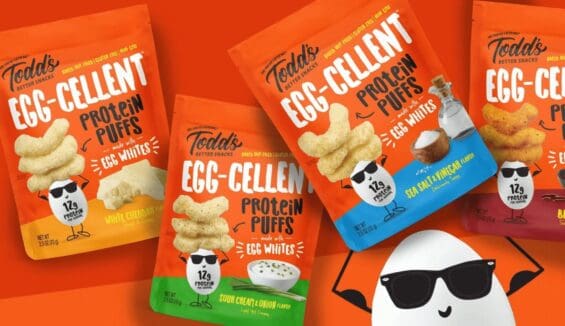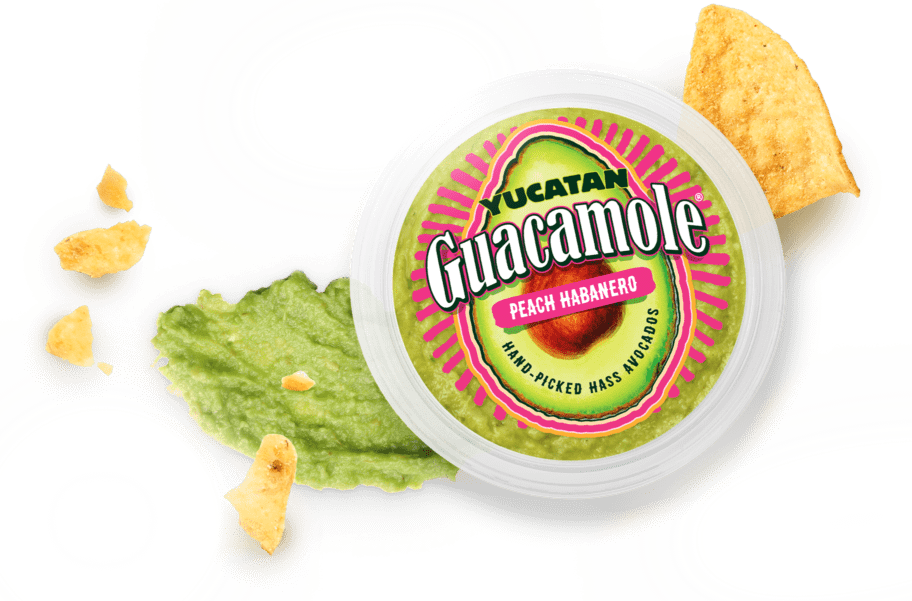Brand identity shapes how you’re seen, what you stand for, and why customers choose you. But as your business evolves, that identity can fall out of sync with your values, goals, or positioning. That’s when rebranding becomes more than an option; it becomes a strategic move.
Whether it’s a bold redesign or a simple new tagline, rebranding can rebuild confidence, re-engage your fan base, and open the door to a broader audience. Done right, it aligns your message with market realities and fuels more effective campaigns.
In this article, we break down rebranding strategies and highlight real-world transformations from small businesses to iconic names like Stella Artois. You’ll get actionable ideas rooted in creativity and insight into how brands refresh for a new generation.
Want to know how to make your brand relevant again, from the logo to the store shelf?
Read on. The right tagline could be the start of something bigger.
Why Do Companies Consider a Rebrand?
Rebranding isn’t just a design update; it’s a strategic shift. Done well, it can refresh a company’s image, attract new demographics, and reclaim market relevance. But a successful rebrand takes more than a bold logo or catchy name. It requires careful planning, clear direction, and often, a complete rebranding checklist.
Still, not every attempt lands. High-profile rebranding failures, such as Gap’s short-lived logo switch or Elon Musk’s rework of Twitter into “X,” remind us that change without a strategy risks alienation. Even with the best intentions, the execution matters.
So, why rebrand at all?
Because markets shift, customers evolve, and brands must follow. Whether it’s taking baby steps towards rebranding or launching a complete transformation, staying stagnant is rarely an option. Think of Old Spice’s rebranding as an innovative pivot that turned a dated product into a pop culture hit. Or Meta, whose name change helped reposition Facebook during a turbulent period.
A strong rebranding strategy can also help brands move past reputation issues, target a new generation, or unify fragmented messaging. From nonprofit to high-profile product rebranding examples, the goal remains the same: stay relevant, grow stronger, and connect better. In fact, reviewing small business statistics can help highlight how even minor branding inconsistencies can affect customer perception and long-term growth.
Successful Rebranding Examples
Rebranding can be a daunting task for any business, but the good news is that there are numerous successful examples to draw inspiration from and develop a proactive rebranding strategy. The most effective rebranding efforts are typically achieved through meticulous planning and execution, often with the assistance of experienced branding and design professionals.
The following is a list of inspiring stories of successful rebranding from various periods. These examples demonstrate how a well-executed rebrand can positively impact companies, providing advantages for updating their brand image and connecting with their target audience more effectively.
Google Generative AI Search
As generative AI tools, such as ChatGPT and ClaudeAI, gained popularity, more people began using them for various search and information retrieval activities. Seeing this, Bing incorporated a generative AI search within its model to stay relevant to the changing market. It compelled Google, one of the largest tech giants, to revamp its brand strategy and remain competitive.
The company launched its AI-based search algorithm in 2023, which is still in the beta phase and hasn’t been entirely rolled out. It is only available for testing and experience, and Google calls it the generative search experience GSE. In contrast to traditional search systems, Google will now utilize generative AI to comprehend the context of each search query and identify the most relevant results.
While it is a partial rebrand, the company has successfully created excitement around its new brand strategy by first launching the testing and experience phase.
Chobani Evolution To Food Focus Wellness
Chobani, once synonymous with Greek yogurt, executed a standout rebrand that redefined its identity. As one of the most strategic brand transformation examples, it shifted from being a yogurt brand to positioning itself around “food-focused wellness.”
This move wasn’t just about messaging; it was also about strategy. It was a full-scale brand revitalization, marked by product innovations like Less Sugar Greek Yogurt and Chobani Flip, as well as a clear mission: “fighting for happily ever after.” The brand’s Impact page reinforced its broader purpose beyond food.
One of the boldest moves came in packaging. The company swapped sterile white cups for designs inspired by 19th-century American folk art, utilizing a rich and varied color palette. This visual overhaul is now one of the best rebrands of all time in the category, creating instant shelf distinction and emotional resonance.
Chobani is now among the top companies that have rebranded successfully. Its focus on health, sustainability, and standout design has made it a go-to case in rebranding marketing strategy discussions and a compelling example of rebranding on social media, where its new identity continues to connect with a broader audience.
For brands exploring their next move, Chobani stands out as one of the most effective examples of rebranding.
Candid: A Splendid Merger Of Foundation Center And GuideStar
The merger of the Foundation Center and GuideStar led to one of the most successful brand transformation efforts in the nonprofit sector. The result was Candid, a unified platform that now serves as the largest source of information on U.S. philanthropy and nonprofit organizations.
This move stands out among notable business rebranding examples, as it combines two trusted entities under a single, refreshed identity. As a seamless brand name change example, the Foundation Center’s site was redirected to Candid’s new platform, featuring a streamlined design, a unified mission, and a clear purpose. Meanwhile, the GuideStar site remains accessible, offering context around the merger and links to the new site, providing a practical approach to the rebranding launch.
Candid now operates as a go-to hub for philanthropic data, simplifying research and collaboration for donors and nonprofits alike. It’s a practical example of rebranding done right, enhancing services without losing legacy trust. The brand’s clarity, reach, and design reflect a strong rebranding template for other companies rebranding or merging identities.
This brand renaming example is more than a name swap; it’s a functional brand reinvention that modernized tools, updated messaging, and introduced new rebranding products and services to meet evolving user needs.
For anyone seeking a contoh rebranding that successfully balances legacy value with future growth, Candid offers a model worth studying.
Pet Food Experts
Pet Food Experts underwent a thriving rebranding campaign that reflects the company’s growth and evolution over the years. This rebrand wasn’t just a name change; it was a strategic shift that reflects decades of development and a clear separation from its origins as Rumford Aquarium.
Among the most notable updates was the company’s product rebranding, notably the logo redesign. The new mark is sleek, modern, and built to convey national scale and trust in the pet care space. It helped sharpen the company’s identity while distinguishing it in a highly competitive market.
This transformation stands as a compelling example of rebranding, driven by a need to align the brand’s image with its current reach and values. While not a nonprofit rebranding example, it shares common goals: clarify purpose, elevate perception, and signal readiness for future growth.
For brands seeking practical rebranding ideas, Pet Food Experts demonstrates how honoring your legacy while embracing the future can unlock new opportunities—much like the impact seen in the Old Spice rebranding case.
Dropbox Became Connective Tissue For Teams
Dropbox was one of the most famous file storage and sharing web services, which was widely used around the globe. The company planned to take its services a step further by offering support for teams and organizations, allowing them to plan and execute projects without interruption. As a result, in 2017, the team developed a new brand strategy and gained increased brand recognition through the use of its APIs, tools, and integrations.
During the brand refresh, Dropbox worked on its logo, making it cleaner and more straightforward. The old box logo represented file sharing and storage, while the new one represented a collection of surfaces. Dropbox is now an open platform for creation and development. As a result of this new brand identity, the company attracted more customers.
GoDaddy’s Transformation
GoDaddy had long been known for its quirky and, at times, unsettling brand image. The company had risen to popularity, accompanied by a cartoon head, leaving many customers uncomfortable. Recognizing the need for change, GoDaddy decided to bid farewell to this quirky past and embrace a more user-centric identity.
In January 2020, the web domain giant GoDaddy embarked on a brand refresh journey that would redefine its identity and user experience. At the heart of this transformation was creating a new logo, ‘ Go.’ This logo, an interlocking G and O, was a departure from the kooky cartoon head of old.
The logo redesign reflected a friendly, curvy, heart-like shape with minimal noise, aligning with contemporary design trends. GoDaddy’s internal design team collaborated with external branding firms Codo and Lippincott to bring this vision to life. GoDaddy complemented the logo change with a revamped website and advertising campaigns.
Both were designed to be sleek, sparse, and devoid of the sales pitches and cartoonish images that had characterized the old brand. GoDaddy’s chief brand officer, Cameron Scott, emphasized that the new identity represented the entrepreneurial spirit and a commitment to supporting customers at every step of their journey this message aimed to be uplifting and supportive, putting the customer firmly back in control.
Facebook Turned Metaverse
Facebook’s rebrand to “Meta” was a bold move that emerged in the aftermath of the Cambridge Analytica scandal, which severely impacted the company’s reputation and customer trust. The rebrand was not merely a cosmetic change but a complete overhaul of the company’s identity, mission, and vision.
The new name, “Meta,” reflects the company’s shift toward a futuristic vision of the digital world centered around the concept of the “Metaverse.” This new direction positions Facebook as an innovator and leader in the emerging field of virtual reality and immersive digital experiences.
While the impact of the rebrand on customer trust and market share is yet to be fully realized after two years, the move demonstrates Zuckerberg’s commitment to steering the company in a new direction. The new identity and vision could increase brand value and attract new users excited about the Metaverse’s potential.
Old Spice Ditches The “Old”
Old Spice’s rebranding success story is one for the books. The company’s traditional and old-fashioned imagery was losing market share, as it failed to appeal to younger audiences who associated the brand with their grandparents. In response, Old Spice underwent a complete image overhaul, retaining its name intact.
Through clever research, the company discovered that women made up 60% of body wash purchases and launched a hilarious new campaign, “The man your man could smell like,” aimed at both men and women. The campaign was launched on Super Bowl weekend, and it quickly became a viral sensation, generating laughter, smiles, and a newfound appreciation for Old Spice’s brand personality.
The rebranding campaign was a resounding success, dramatically boosting sales and brand awareness. Old Spice continues to innovate with fresh approaches to video and social media campaigns, ensuring its brand remains relevant and appealing to new consumers.
LEGO Extended Its Reach
LEGO’s rebranding effort is a compelling example of how a company can expand its reach without completely overhauling its visual identity. While the brand name, logo, and color palette remained the same, the company recognized the need to connect with a broader audience and establish its relevance in the digital age.
LEGO implemented a new brand identity and guidelines that emphasized digital channels to engage with kids and parents, aiming to achieve this. The company created LEGO movies, games, television shows, and unique toys for adults, recognizing that people of all ages enjoy building things.
The rebranding effort paid off, with sales skyrocketing and the company even creating specialist digital channels to connect with customers interested in franchises like Star Wars and Harry Potter. LEGO’s success demonstrates the importance of recognizing and adapting to changing customer needs and preferences, even without a complete rebrand.
KIA – A Transformative Journey in Rebranding
In 2021, Kia embarked on a remarkable rebranding journey, marking a significant shift in brand identity and positioning. The company faced challenges in differentiating itself from competitors and adapting to the changing landscape of the automotive industry, particularly the transition to electric mobility.
The primary motivation behind its rebrand was to reposition itself as a leader in innovation and technology within the automotive sector. Another objective was to signal its commitment to electric mobility and sustainability, shed the perception of being “conservative,” and introduce a bold and modern design language.
As a result, KIA unveiled a dramatically different logo, abandoning the word “motors” from its name to emphasize its dedication to electric vehicles. The new logo features angled letters ‘K’ and ‘A,’ creating a distinctive and memorable visual identity.
The company introduced the new slogan, “Movement that inspires,” highlighting its ambition to inspire change and innovation in the automotive industry. Similarly, KIA revamped its approach to car design, shifting from conservative to bold and attention-grabbing designs. The new designs aimed to make KIA vehicles stand out on the streets.
This marketing strategy helped KIA successfully reposition itself as a forward-thinking and innovative brand, attracting attention from consumers and industry experts. Moreover, the bold new logo design effectively caught the attention of car enthusiasts.
Lessons Learned from these Rebranding Examples
The lessons learned from these rebranding examples are valuable insights for businesses contemplating a brand transformation. Each story illustrates distinct strategies and outcomes, offering a diverse range of takeaways:
- Embrace Change with Purpose: Rebranding should not be undertaken lightly. It requires a clear and compelling reason. In KIA’s case, the company reinvented its identity to position itself as an industry leader in innovation and sustainability.
- Evolve Without Losing Identity: LEGO’s rebranding demonstrated that you can expand your reach without losing the essence of your brand. By adapting to the digital age and diversifying its offerings, LEGO appealed to a broader audience while staying true to its core values. Evolution doesn’t mean abandoning your brand’s identity.
- Bold Logo Changes Can Pay Off: As seen with KIA’s redesign, a dramatic logo change can capture attention and signal a bold commitment to change. It indicates that a new logo can be a powerful symbol of transformation.
- Consistency is Key: Chobani’s shift from yogurt to “Food-focused wellness” involved a new mission, product changes, and advertising alignment. Consistency in messaging, products, and advertising strengthens the impact of rebranding.
- Merge for Mutual Benefit: The Foundation Center and GuideStar merger into Candid showcased how combining strengths can create a stronger brand. It means strategic partnerships can enhance your brand’s capabilities and impact.
- Engage Your Audience: Interacting innovatively with your audience can revitalize your brand—Old Spice’s viral rebranding campaign.
- Stay Relevant: Even successful brands like Dropbox recognized the need to evolve with changing markets. Their shift from a file-sharing symbol to an open platform demonstrated adaptability.
- Overcome Negative Associations: Rebranding can help a brand distance itself from negative associations, as Facebook did with its rebrand to Meta. It can be a strategic move to leave behind a tarnished reputation.
- Learn from Failures: Elon Musk’s Twitter logo change and Gap’s short-lived logo redesign serve as reminders that rebranding can go wrong. Therefore, plan and do market research before starting the rebranding process.
- Plan Meticulously: Successful rebranding often requires meticulous planning, as exemplified by Pet Food Experts’ comprehensive approach. Thoroughly plan every aspect of your rebrand, from logo design to marketing materials.
- Connect with Your Audience: Stella Artois’s rebranding success reinforces the importance of authentically connecting with your target audience. The key to a successful rebrand is understanding your audience’s needs and preferences.
- Adapt and Innovate: Rebranding doesn’t always mean a complete overhaul. LEGO, for instance, adapted by innovating its product offerings. Adaptation and innovation can be effective rebranding strategies.
These lessons underscore that rebranding is a strategic endeavor that should not be taken lightly. It requires a deep understanding of your brand, its audience, and the ever-changing business landscape. A successful rebrand should align with your brand’s core values, resonate with your target audience, and reflect your commitment to growth and industry relevance.

Nice Package
Don’t miss out on our monthly newsletter Nice Package!
Each month, we deliver a data-driven newsletter directly to your inbox, unpacking a critical topic in the FMCG & CPG industry.
"*" indicates required fields
Data-Driven Brand Development That Can Guarantee Sales Performance.
If you need a rebrand with performance predictability, we can help. SmashBrand is a rebranding agency that researches, designs, and tests all products to ensure peak shelf performance. Book a time to discuss your project with our team.
Subscribe to
Nice Package.
SmashBrand’s Nice Package: Stay current with our latest insights
Free Resource.

CPG product repositioning guide.
Explore the five undeniable signs your CPG product needs repositioning along with strategies for leveraging consumer insights for a guaranteed market lift.
Download Whitepaper About CPG product repositioning guide.

